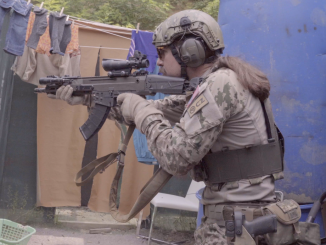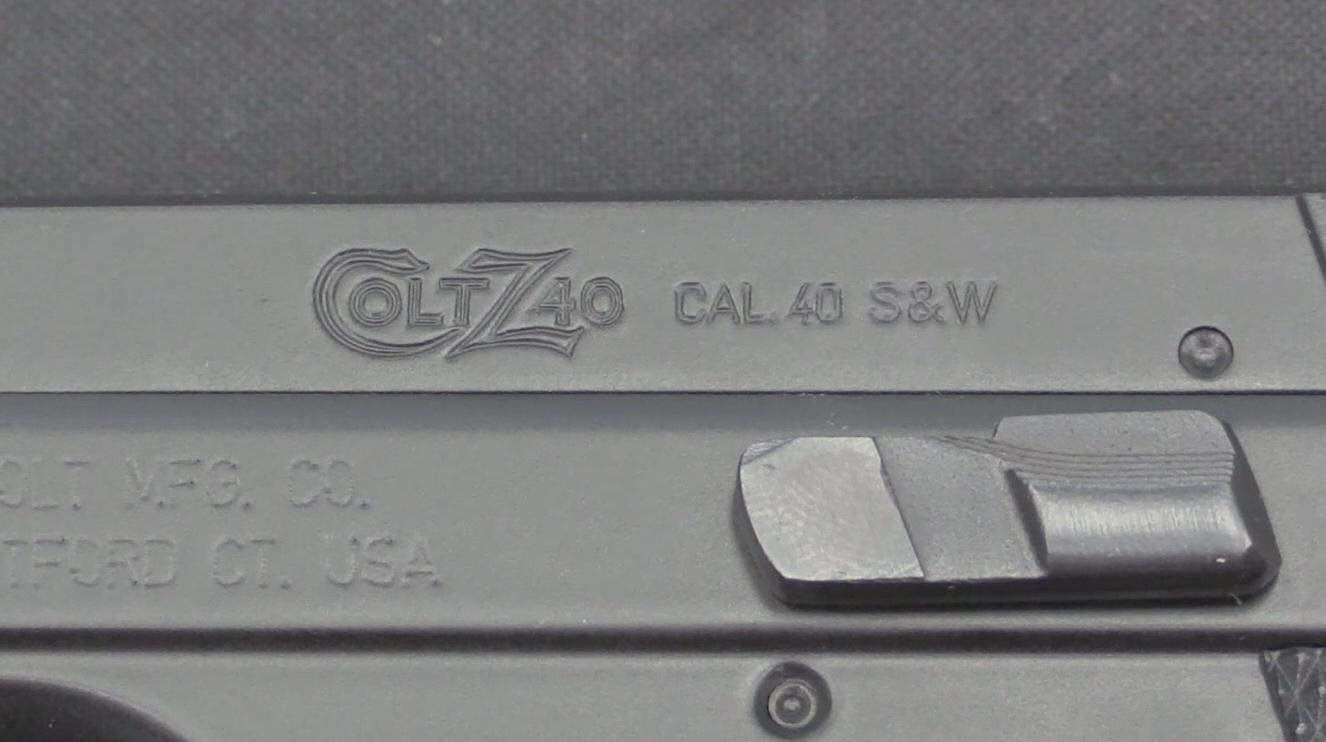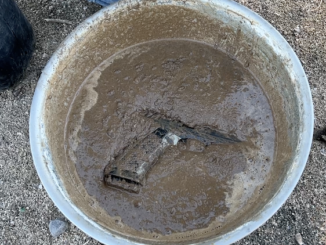In the US, the commonly accessible version of the vz.61 Skorpion is the stock-less semiauto pistol – and in that configuration the gun is really nothing like the intentions of its designers. The Skorpion was designed to be a personal defense weapons, and in the small .32ACP caliber that really requires fully automatic fire.
The short and small stock does, in fact, provide a nice addition to help control the gun. It does not need to really brace against recoil (which is really minimal), but it does a useful job in providing a third point of contact to keep the gun in control and on target. That said, the Skorpion is actually quite controllable when fired offhand without a stock – much to my surprise.
Thanks to Marstar for letting me examine and shoot their Skorpion!




Who would have thought the Czechs would know how to design a good easy to use gun. 😉
Some people had harsher comments about this model considering it as “stain on Czech weapons designer’s curriculum”
In reality, Czech industry in general was not bashful about this product. I remember that image of vz.61 was portrayed even on vehicles of public transportation as one of its achievements. That by itself speaks volume.
The whole point of the PDW in general and VZ61/RAK 63 in specific is people tend to be bad pistol shots. Think of the PDW as a compact shotgun like weapon. Ian demonstrated the advantages of guns like the bz61 perfectly.
Well captured characterization, I though about it couple of times same way.
12 gauge shot-shells as used by AEF during World War I has nine 00 pellets, that is .34″ diameter, each having mass around 60 grains, which is lighter than .32 Auto bullet (73 grains) as first is spherical.
Thus in term of raw projectile mass one 12 gauge shot-shell is equivalent of ~7.40 cartridges .32 Auto
Not only are people usually bad shots with a pistol, but it’s pretty much impossible to be as good with a pistol than with a shouldered firearm, assuming equal amount of training. Therefore, if you have to choose with a pistol and a semiauto or selective fire shouldered gun, the latter makes more sense in most military contexts. There are of course exceptions such as very tight quarters (i.e. tunnels and other “crawl spaces”)
Great review!
This gun begs for a compensator slot cut at the end of the barrel.
Kids raised in the 90s will get some memories back :
Firing a pair of these like in Goldeneye 64 seems to be perfectly achievable…
Klobbs are gross and should always be ignored for the KF7, even when there’s no KF7.
Skorpions are nice though.
I’ve alway looked at the VZ61 and the RAK63 as early PDW.
Rak63 is also one of my favored machine-pistols because it is so minimalistic. This is next I like to see Ian get into. Comparison of both would be great…. and with Stechkin pistol on top of it!
Ian, thanks for this. I remember a spy novel from the 1970s where this weapon was used. The hero was told NOT to fire from the hip because he would grt a facefull of brass. I always wanted to see one in action. Glad to see you not try hip shooting!
What a show…. Ian even brought his ‘expedient’ head protection 🙂
Yeah it is surprisingly stable, due to low impulse of 7.65×17 ammunition. Thank you Mr. Browning! 🙂
“7.65×17”
There is nice table-summary of Skorpion variants in Russian wikipedia query
https://ru.wikipedia.org/wiki/Šcorpion_vz._61#Варианты
data in rows are as follows:
Cartridge
Mass without magazine, kg
Length with stock open, mm
Length with stock closed, mm
Barrel length, mm
Sights radius, mm
Rate-of-Fire, rpm (vz.91S is self-loading variants, thus no data for it)
Seeing Ian actually wearing the VZ61 in its holster with the extra mag pouches…it all makes sense now. A mostly handy way to carry a good PDW.
Nice.
As I am usually hit with afterthought… something about that stability. I do not know history of the development of vz.61, but even so I can speculate that they chose magazine forward of trigger for a reason (part of that tricky rate-retarder).
If you look critically at conventional pistol with magazine in grip you must admit that this is about as contrary to ability to hold it on target as it gets. No wonder competition guns have weight under the muzzle. On this particular gun it was mimicked rather well, even that hefty barrel nut plays its role.
So here we have it: light enough yet not too bad a ‘kulspruta’.
“No wonder competition guns have weight under the muzzle.”
If not some rules, competitions would probably be dominated by barrel low automatic pistol, in style of https://ru.wikipedia.org/wiki/МЦ-3_«Рекорд»
photo in link should explain better than words
“If you look critically at conventional pistol with magazine in grip you must admit that this is about as contrary to ability to hold it on target as it gets.”
But it offer better barrel-to-overall length ratio. Also allow more, hmm… smooth or snag-less shape, just look at Mauser HSc, can you have similar snag-less shape with same cartridge and magazine capacity, but magazine in front of trigger guard? For comparison sake: Bergmann Bayard and Astra 400 both used 9×23 Largo cartridge, 1st has 101 mm barrel and 254 mm length (~39.8%) when 2nd has 150 mm barrel and 225 mm length (~66.7%).
Additionally notice other factors, one is height of barrel axis above trigger (grip) and fact that in most automatic pistol there are two reasons for “swing”, one is, obviously, reaction to launching barrel, second is moving parts hits most rearward position.
I thought in past quite a lot how to reduce muzzle rise on pistol during shot. I can see a (properly contoured) brace which would act on top of forearm, being rigidly connected (perhaps telescoping in and out) with pistol’s frame may help. But then, the practicality of such addition may be an issue.
Later my thought direction turned to more practical ways such as impulse absorption within mechanism itself. It is known that rotary action is helpful in that sense.
I note the high bore axis/ reciprocating weight axis. Combined with the high recoil spring position they seem to work together to drive the muzzle down. Given that Ian notes it moves around a bit, scaling this gun up (increasing bolt mass) would be another interesting line of thought. Walther in early 60’s made an SMG (iirc MPL) with a hollow tube on top of the bolt which increased reciprocating weight axis. Ian did a video.
That same tendency to make pistol more stable while locating return spring above barrel was demonstrated on several early semi-auto pistols such as Frommer. It seem to make sense in that context. I hazily recall your mentioned Walther SMG which indeed achieved pretty good stability during fire. It may be helpful to return to it.
“how to reduce muzzle rise on pistol during shot”
Why not to use muzzle device directing part of gases upwards, thus working against rise?
I think you might find following interesting, though it is for avtomat class of weapons and it is 1960s state of knowledge, excerpt from http://www.dogswar.ru/oryjeinaia-ekzotika/strelkovoe-oryjie/8028-opytnyi-avtomat-la-4.html
в автоматах с отводом газов (АКМ) импульс составляет 0,4 кг/с, в автоматах с ходом ствола вперёд – 1,2 кг/с, а в системе с длинным ходом ствола назад – 0,1 кг/с.
in avtomats gas-operated (AKM) pulse equals 0,4, in avtomats with barrel moving forward equals 1,2 and in case of long-recoil operation 0,1.
Very interesting design this LA4. As I gather the recoil to frame reduction is achieved by differential impulse of individual parts, namely impulse forward by moving barrel. I looked at picture to get sense of the mechanism function, but still missing the core of description. Are there any means of impulse transfer from primary to secondary mass thru accelerator?
There is something similar I believe used in new medium heavy machinegun (.338 Norma Mag.) by General dynamics. There also large part of mechanism moves forward while shot is fired.
Great content, great mythbusting. Nice to see a spotlight on such an unusual class of firearms as the mini-SMG.
Now I’m imagining the .25 NAA cartridge used in the Skorpion, MV pretty impressive from that barrel length.
https://northamericanarms.com/shop/firearms/naa-25naa/
Interesting how the rate-reducer gives the gun TIME to return to its original position before firing the second shot.
The rate-reducer does two things. The extra time is certainly important, but perhaps more important is the fact that the bolt is released from rest, instead of rebounded elastically. (To be precise, it does rebound elastically at the rear of travel, but the rate reducer immediately catches it and removes the rebound velocity from the bolt, thus partially neutralizing the recoil impulse from the frame.)
Typical semi-auto vz.61 builds eliminate the rate-reducer, considering it superfluous in semi-auto, but I think this is a mistake, and increases felt recoil and muzzle jump, reducing the pistol’s rapid fire capability. (I have in the back of my mind a plan to buy a vz.61 parts kit and build a semi-auto with rate-reducer so I can do a direct comparison someday.)
An excerpt from Hatcher’s Notebook, in regards to a recoil-operated rifle (but also applies to blowback, with appropriate identification of moving vs. static parts), touches on this topic:
“When the gun is fired, the stock and frame of the gun stand still against the shoulder while the barrel and bolt with their mere four pounds of weight are alone opposing the kick of the explosion. As far as resistance to kick is concerned you might almost as well be firing a four pound gun.
“The lighter the parts that oppose the thrust of the explosion, the greater the energy they acquire. Thus in the gun mentioned, the light recoiling parts, driven backward at high speed inside the barrel casing take up a heavy load of energy, then come to a stop against the inside of the receiver and transmit a large part of this energy to the shoulder of the shooter. The result is that the gun has a particularly vicious kick. Shooting this rifle is what first called our attention to the fact that in a self-loading gun of the recoiling barrel type the whole weight of the gun is not utilized against the recoil.
“Going into the physics of this proposition, it was found that theoretically, if the two parts of the gun were entirely inelastic, as for example if they were made of lead or putty, this effect would not occur, for after the two parts came together, the recoil energy would be reduced to what it would have been if no independent movement of the barrel had taken place. On the other hand, if the parts were perfectly elastic, they would act like two ivory billiard balls, and there would be an interchange of velocity, so that the recoiling barrel and bolt would stop and most of the energy in these parts would be transmitted to the stock and then to the shoulder. As the steel gun parts have a high degree of elasticity, this is just what happens.”
By making the bolt “stick” in the rear position, even briefly, the vz.61’s rate reducer makes the collision perfectly inelastic.
I am wondering how would recoil of MGD PM-9:
http://modernfirearms.net/en/submachine-guns/france-submachine-guns/mgd-pm-9-eng/
be like? As it deploys flywheel principle there is not moving parts hits most rearward position moment.
A valid remark in my opinion. That cycle interrupting mechanism has its meaning even for semi-auto fire, as you described it. It waits slide till system resonance settles and is returned to start condition.
And surely enough, shooters body has contribution to energy attenuation; without it the gun would be “ringing” long time after shot is fired.
Intriguing thread drift my dear Daewoo,
A rotating bolt/flywheel could theoretically provide a ridiculously long bolt stroke, therefor an infinite distance to absorb recoil.
Unfortunately, MGD PM-6 SMG’s bolt drives the flywheel with a mechanism that limits stroke, similar to the way the crankshaft limits piston rod travel in an automotive engine.
OTOH if the flywheel were driven by a gear or cable (see some of AK-100 series) with a ratchet, the flywheel would be able to spin forever. If you gear two flywheels together, you can still build a 4 pound bolt, but the opposite-rotating halves would cancel each other. You could use the second flywheel/bolt to load the next round.
Accuracy would also improve with a flywheel/bolt because you would not have that big, heavy bolt clunking forward to change your point of aim.
Rushing to the patent office.
PPSH… I like this .32 actually.
The main reason for which the Skorpion is a historical gun, is that Mario Moretti, leader of the Red Brigades, killed Aldo Moro, former prime-minister of Italy (several times) and chief of the Christian Democratic party, on 9 May 1978, in Rome, after 55 days of captivity. I’m surprised nobody reminded that.